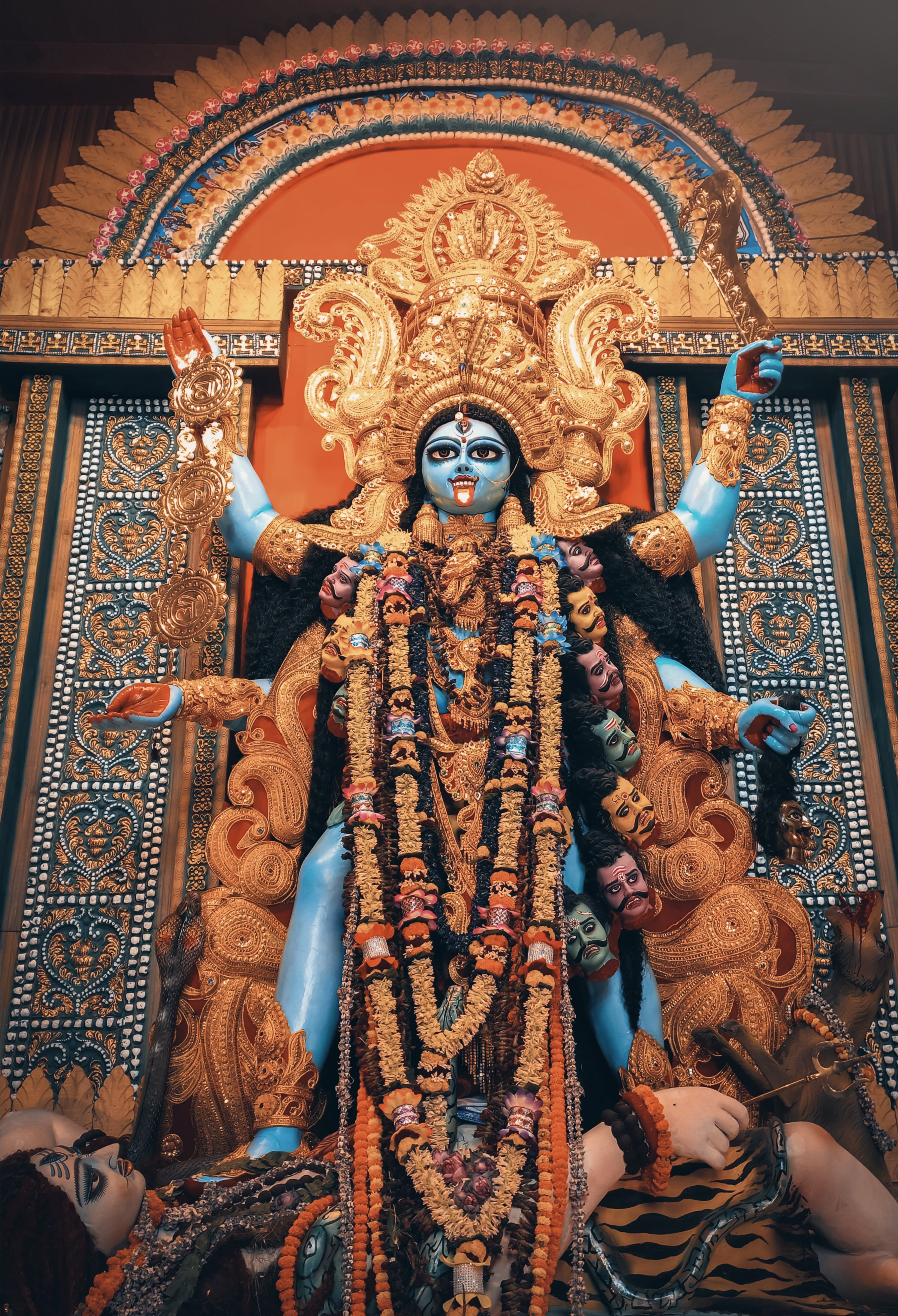Goddess Kali is one of the notable and outstanding Hindu deity goddesses. From the iconography loaded with meaning we see that she is the multi-faced Goddess of chaos, strength, and change. This article delves into the deep symbolism surrounding the icon of goddess Kali.
The fiercer form of the Divine mother.
The goddess Kali is commonly portrayed as a grim-faced creature with dark skin causing instant panic and love. Kali is actually a corruption of the Sanskrit term “kala” that means both time and death. It is an image of unforgiving passage of time that swallows everything in its path.
The main image that symbolizes Kali is that of the ferocious and insatiable manifestation of the Great Goddess. A notable example is her principal image where she stands over the dead/recumbent form of Lord Shiva. The destruction of the old to create room for the new can be better depicted using this visual metaphor as a powerful symbol of her role in dismantling the cosmos.
Adornments of Goddess Kali
The adornments of Goddess Kali are laden with symbolism, each contributing to her powerful persona:
Dark Complexion: The unyielding and omnipresent power of time is reflected by her dark complexion. It represents her as the supreme being, who encompasses both life and death.
Garland of Severed Demon Heads: Of all these elements that describe her outlook, it is the garland of severed demons’ heads around her neck that stands out as the most striking. These heads symbolised the demons Vanessa had overcome; they represented her success of vanquishing evil forces. This imagery shows victory of good over evil.
Protruding Tongue: At times, her protruding tongue is viewed by the observers as a sign of satiety that drives her demand for blood literally or figuratively. It shows that she is not afraid, instead she faces evil on her own.
Skirt of Severed Human Arms: The severed human arm is always portrayed as her clothes. These arms signify her ability to protect and nourish her constituents. They represent her preparedness to overcome every possible challenge.
Multiple Arms: In most cases, Kali is represented as possessing multiple limbs with every limb holding a distinct instrument. The various arms represent the diversity of her powers. She uses a sword (representing knowledge), a rope (representing attachment), a severed head (representing the ego), as well as a trident (representing the power of will, which is her weapon most often).
Although her iconography is evidently fierce, it should be noted that this aspect of Kali’s image masked a kinder side. Therefore, in Hinduism, Kali is depicted as a loving but ferocious protector shielding her children from evil and suffering. She is an embodiment of power who, therefore, people look upon as having the strength and courage that they need to succeed.
She appears fearsome as a reminder that divinity may be expressed through more than one form. One of these deities is called kali, which means that the metamorphosis into a scary form usually accompanies changes. Personal development and spiritual progress calls for facing such changes without any fear and courage.
West Bengal is known for its great celebration of Kali Puja that acknowledges the mighty representation of goddess Kali. Processions are splendid with cultural programmes accompanied by lighting of diyas.Sophisticated shrines are put up housing the idol of kali and people pray it for protection, power or removal of obstacles from her ways.
The processions and decorations during Kalipuja also highlight the scary kindly Kali’s iconography and symbolism.
The Modern Reinterpretation of Kali
In contemporary culture and art, Kali’s iconic image breaks traditional boundaries, symbolizing empowerment, change, and the unstoppable nature of time. She is reimagined in diverse ways, inspiring and strengthening individuals in the face of adversity.
Goddess Kali’s iconography reflects a complex divinity, symbolizing power, destruction, and transformation while eliciting awe and reverence. Behind her fearsome appearance lies a compassionate heart, teaching that confronting life’s intimidating aspects fosters personal growth.
Kali’s image reminds us that transformation often arrives in formidable forms, and our response defines our journey. Ultimately, she represents the indomitable spirit guiding us through life’s cycles.

